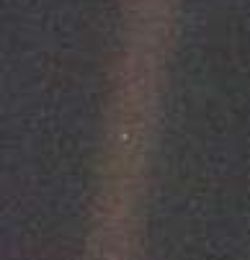It’s so cheap to register a custom plate in Wisconsin that I just couldn’t resist. I’m going to remain agnostic about whether my plate is big-endian or little-endian, though.
Category: Stranger than fiction
-
open thread
what are you all up to?
Oh, forgot to mention. It’s been insanely cold here. So insanely cold that our front door is frozen shut. All pizza deliveries must be routed through the garage.
-
alt.history
After a lot of reading about the Pacific Theater in World War II, I’d come to roughly this conclusion, succinctly stated by Steven (whose expertise exceeds anyone else’s I’ve yet met):
The point is that WWII was a war of attrition, not really a war of maneuver. Even the Pacific campaign was more of a war of attrition, and what mainly was subject to attrition was equipment and trained personnel.
This is why I remain conflicted about the decision to use the atomic bomb. I know there’s a healthy debate about it to this day, and unhelpfully the debate tends to mirror the left-right political divide in America, adding to the murkiness.
I think I have to admit that it’s ok not to have a dogmatic opinion about it, but rather to see the decision to drop the bomb as just that, a strategic decision. We can assess the morality, strategy, and potential influence upon modern policy quite separately from the question of whether it should have been dropped or not.
Next time I go to Japan, I will visit Hiroshima. No running away this time.
-
The End of Facebook Hype
Via Google Trends. It seems like the “Facebook Phenomenon” is where the “MySpace Phenomenon” was 2 years ago culturally. My prediction is that 1 year from now you won’t hear much about Facebook, it looks like the buzz is already flattening out, though it will take a little while for people to notice….

-
pale blue pixel
What would the Earth look like to aliens? A recent astrophysics paper suggests that it would stand out, even if it were only resolved as a single pixel:
what if aliens were hunting life outside their own planet? Armed with telescopes only a bit bigger and more powerful than our own, could they peer through the vastness of space and lock in onto Earth as a likely home to life?
That’s the question at the heart of paper co-authored by a University of Florida astronomer that appeared recently in the online edition of Astrophysical Journal. The answer, the authors say, is a qualified “yes.†With a space telescope larger than the Hubble Space Telescope pointed directly at our sun, they say, “hypothetical observers†could measure Earth’s 24-hour rotation period, leading to observations of oceans and the chance of life.
“They would only be able to see Earth as a single pixel, rather than resolving it to take a picture,†said Eric Ford, a UF assistant professor of astronomy and one of five authors of the paper. “But that could be enough for them to identify our planet as one that likely contains clouds and oceans of liquid water.â€
 As the writeup notes, the motivation for this line of inquiry is to optimize the earth-based search for extrasolar planets harboring life. It occurs to me however that we’ve already an example of a single-pixel view of earth – the famed Voyager 1 photo of the Earth from a distance of 4 billion miles, labeled by Carl Sagan as a “pale blue dot“. I’ve cropped the original photo at right, click to see the full field and appreciate just how tiny that dot is. At that distance, Earth is only 0.12 pixels in size. The streak is an chromatic artifact, and not “the view through Saturn’s rings” as some have erroneously described it.
As the writeup notes, the motivation for this line of inquiry is to optimize the earth-based search for extrasolar planets harboring life. It occurs to me however that we’ve already an example of a single-pixel view of earth – the famed Voyager 1 photo of the Earth from a distance of 4 billion miles, labeled by Carl Sagan as a “pale blue dot“. I’ve cropped the original photo at right, click to see the full field and appreciate just how tiny that dot is. At that distance, Earth is only 0.12 pixels in size. The streak is an chromatic artifact, and not “the view through Saturn’s rings” as some have erroneously described it. There’s a lot of data in that single, pale blue pixel.
-
Tokyo
I spent all of one day in Tokyo on my trip to Japan a few years ago. In that day, I barely scratched the surface of Akihabara and Shinjuku, where I spent most of my time. It’s a city that is impossible to summarize or to understand. Prior to visiting Tokyo, the largest mega-metropol area I’d ever been in was New York City, and even as I felt awed by Manhattan I was still able to come to grips with it in a sense. Tokyo was just on another scale. This is why this travel article in the WaPo seems to familiar to me, even though I essentially saw zero of the Tokyo described therein. The introduction does a fine job of painting Tokyo in wide statistical swaths:
As a megacity, Tokyo has no rival. It has more buying power than Brazil, more people than Canada, more concrete than can be imagined.
With about 35 million people, greater Tokyo is by far the world’s most populous metro area, with nearly twice the people of greater New York. There are 80,000 restaurants here — six times as many as in New York.
Although it is the political, economic and cultural center of Japan, Tokyo itself has no real center. It’s a jumble of densely populated districts that are themselves big cities, hubs for the frenetic inbound rush and exhausted homeward retreat of millions upon millions of subway and train commuters.
The article itself is just a placeholder though, for three videos that focus on unique aspects of Tokyo micro-culture: Goth-Lolita girls, salarymen, and the Tokyu Food Show. In some ways, these videos give a better context for me to “fill in” the background of anime, supplementing my own personal experience.
-
good ol’ rock, nothing beats rock
Never doubt the wisdom of Homer Simpson. A genius, he, unappreciated by his peers, presciently revealed the ultimate secret winning strategy to winning rock-paper-scissors. He has been roundly mocked, but it is Homer who will have the last laugh:
According to New Scientist magazine, the way to win is to start with scissors.
Research shows that stone, also called rock, is the most popular of the three possible moves in the game.
That means that your opponent is likely to choose paper, because they will expect to you to start the game with stone.
By going with scissors, you achieve an early victory.
Fools! little do they know that we know that they know that rock is the most popular, so by choosing scissors, they render themselves vulnerable to rock! Bwahaha!
-
Douglas Adams Avenue
What a hoopy idea:
On May 11, 2001 a very talented writer and activist was taken from this world far before his time. Not yet 50 years of age, Douglas Adams passed on and left a legacy for all that would come after him.
It it with honor and humor that Geek in the City and the Rename42nd.org Group ask the citizens of Portland to accept the changing of 42nd Avenue into Douglas Adams Boulevard.
Transforming 42nd Avenue into Douglas Adams Boulevard will reflect upon all those who live and work in the City of Portland.
It will reflect Portlanders’ commitment to the arts.
It will reflect Portlanders’ respect for the environment.
It will reflect Portlanders’ desire to provide technological access to all.
It will reflect Portlanders’ passion to further education to all people.
It will remind all Portlanders’ the most important lesson in times of uncertainty and fear…
…DON’T PANIC.
That is so amazingly cool you could keep a side of beef in it for a month. The idea is so hip it has difficulty seeing over its pelvis.
-
they’ve got our future
so says science fiction writer Charlie Stross, of Japan. His essay on traveling there was a great read. Intro goes:
It’s not the shiny future of jet packs and food pills — oh no, that’s not what Japan is about. Nevertheless, they’ve got it and they’re living in it, damn them. They’ve got express trains that run on time and accelerate so fast they push you back into your seat like an airliner on take-off. They’ve got skyscrapers with running lights, looming out of the sodium-lit evening haze — a skyline just like the famous nighttime scene from Blade Runner except for the shortage of giant pyramids (and they’re building one of those out in Tokyo bay). And they shave their cats.
In the future we will all have shaved cats. And six story high pornography boutiques that sell Hello Kitty! novelty toys on the ground floor. And 200mph super-express trains blasting between arcologies through a landscape scorched by the waste heat of a hundred million air conditioning units. And beer vending machines on street corners. And skyscrapers cheek-by-jowl with temples that are modern reconstructions of buildings dating back to the eighth century (said reconstructions only slightly older than the Christopher Wren iteration of St Paul’s Cathedral).
Welcome to Japan …
Preach it, brother: I was there. Ambitious Japan!
-
makes for a more boring movie…
…but it turns out that flying a modified space shuttle of square-jawed expert miners to implant a big nuclear bomb is not the best way to deflect an asteroid. Instead, use “mirror bees”:
The best method, called “mirror bees,†entails sending a group of small satellites equipped with mirrors 30 to 100 feet wide into space to “swarm†around an asteroid and trail it, Vasile explains. The mirrors would be tilted to reflect sunlight onto the asteroid, vaporizing one spot and releasing a stream of gases that would slowly move it off course. Vasile says this method is especially appealing because it could be scaled easily: 25 to 5,000 satellites could be used, depending on the size of the rock.
Maybe this could be the sequel to WALL-E?